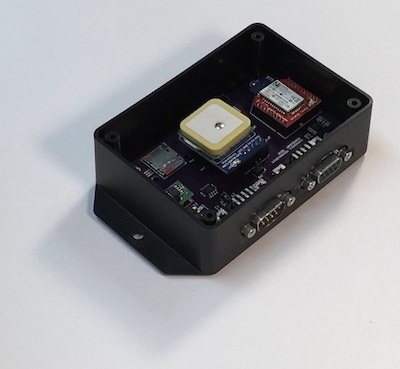Blog
Recent Posts
SAE J1939 (CAN Bus) To RS232 Gateway With USB Option
Posted by on
We at Copperhill Technologies always thrive in adding more products to our line of OBD-II and SAE J1939 devices. Our current focus is on a SAE J1939 to RS232 gateway that can also easily used to connect to a USB port. The firmware will be identical to that of our SAE J1939 to Bluetooth Gateway With 9-Pin Deutsch Connection Cable, with the only difference that the output is channeled to the RS232 port. An optional RS232-to-USB converter allows to connect the gateway to a PC's USB port.
The gateway's hardware is based on our SAE J1939 / OBD-II Electronic Logging Device With Bluetooth as shown in the image to the left. The actual PCB is the same; we just won't populate the Bluetooth and GPS module.
The gateway supports the full SAE J1939 protocol according to J1939/81 Network Management (Address Claiming) and J1939/21 Transport Protocol (TP). It is also supported by an extensive programming interface for Windows and Linux/Ubuntu applications, including full C/C++/C# source code for short time-to-market developments.
The strength of the board lies in the fact that the entire SAE J1939 protocol, including all timing requirements, is stored on-chip. The board uses anRS232 COM port to communicate with the main system (e.g. a PC), i.e. all data transfer is handled through a standard COM port access. The communication protocol between the board and the main system is well documented and thus allows a porting to any computer system with an RS232 connection. Working source code libraries exist for Windows (C# under Visual Studio 2102/2013), Linux and its derivatives (C++ using Code::Blocks), and Raspberry Pi (C using the standard gcc compiler).
The communication protocol between the gateway and the host system (e.g. a PC) is well documented, and we provide C source code to read and write CAN data frames.
In addition, the gateway is supported by our jCOM1939 Monitor, an SAE J1939 Monitoring, Analyzer and ECU Simulation software under Windows.
The jCOM1939 Monitor Software is the perfect tool to monitor, analyze, and simulate SAE J1939 data traffic.
Features
- ARM Cortex-M3 Processor
- CAN Bus Interface - Fully ISO-11898 Compliant
- SAE J1939 Protocol Stack
- Extended Temperature Range of -40C to +85C
- Input Power Range of 7 VDC to 36 VDC
- Flame Retardant ABS Enclosure 4.25 x 3.00 x 1.38 in / 107.95 x 76.20 x 35.05 mm
- Environmentally friendly, RoHS compliant
Specifications
- CAN Interface
- CAN Controller integrated in microcontroller
- Fully ISO 11898-compliant
- Supports CAN 2.0A And CAN 2.0B
- Bit rate detection 250/500 kBaud
- RS232 Port
- Baud Rate 115,200 (default)
- Can also be used for on-site firmware upload
- SAE J1939 Protocol Stack
- Fully compliant to SAE J1939/21, SAE J1939/81 and SAE J1939/16
- Sending and receiving of messages (PGNs)
- Message filtering
- Request message processing
- BAM and CM transport protocol (TP) processing
- Static and arbitrary address claim
- Automatic baud rate detection (250/500 kbit/sec)
We are targeting a release by Mid of November 2017. In the meantime, please fell free to contact us anytime to request further information.
SAE J1939 Turbo Interface for Raspberry Pi - Firmware Update
The jCOM.J1939.RPi, an SAE J1939 interface for the Raspberry Pi, is not an RPi HAT in the common sense. The board incorporates an ARM processor with CAN transceiver for use on the Raspberry Pi while allowing the operation with any other RPi-compatible board.By combining our J1939 port interface, the Raspberry Pi, an SAE J1939 cable, and [...]
Programming the SAE J1939 ECU Simulator Board Using Visual Studio C#
The following refers to a Visual Studio C# application, representing a very simplified version of our jCOM1939 Monitor - SAE J1939 Monitor, Analyzer, And ECU Simulator. The jCOM1939 Monitor Software is a tool to monitor, analyze, and simulate SAE J1939 data traffic. The system combines our jCOM.J1939.USB that functions as an SAE J1939 to USB (or UART) [...]
 Loading... Please wait...
Loading... Please wait...

